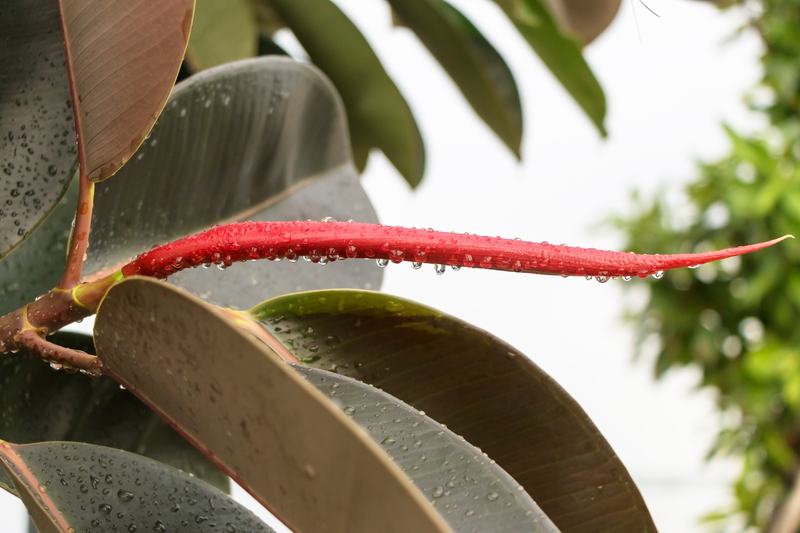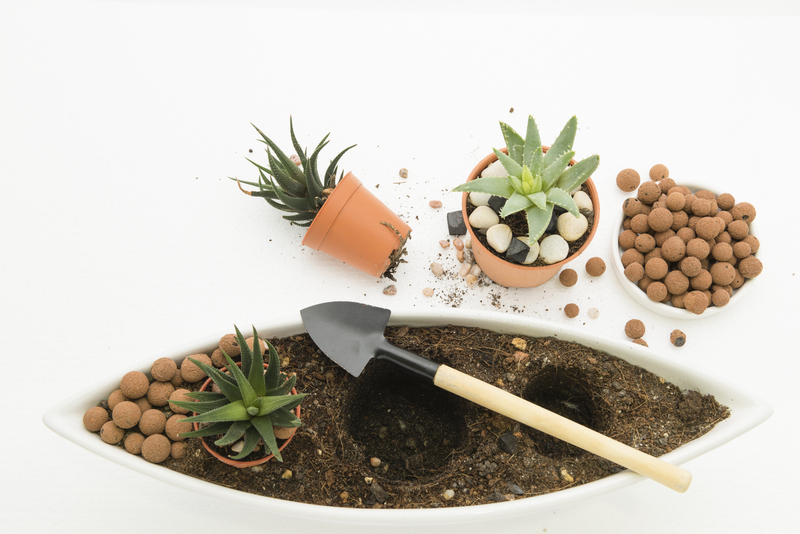Defend Garden Plants From Cold Snaps
Posted on 24/09/2025
Defend Garden Plants From Cold Snaps: Essential Strategies for Gardeners
Gardening is a rewarding hobby that can sometimes be challenged by the fickle nature of the weather. One common challenge that gardeners face is how to protect garden plants from cold snaps. Unexpected temperature drops can quickly damage or even destroy tender plants that are not prepared for frost or freezing conditions. In this comprehensive article, we'll explore actionable steps and expert tips to defend your garden plants from sudden cold weather, ensuring your beautiful green space thrives no matter what Mother Nature brings.
What Are Cold Snaps & Why Should Gardeners Worry?
A cold snap refers to an abrupt and intense drop in temperature, often unseasonal and catching plants (and sometimes gardeners) off-guard. Even a brief cold spell can cause significant harm, including:
- Destroyed flower buds and blossoms
- Blackened, wilted, or mushy foliage
- Stunted growth
- Root damage
- Plant death, in extreme cases
Understanding the risks of sudden cold weather is the first step toward taking action to defend your garden plants from frost and freezing temperatures.

Identifying Vulnerable Plants in Your Garden
Before diving into protection methods, it's crucial to identify which plants are most at risk during cold snaps. Generally, the following types require extra care:
- Annuals: These plants complete their life cycle in one year and tend to be less resilient to freezing.
- Tender perennials: Plants like fuchsias, cannas, and dahlias may survive in warm climates, but not where temperatures drop below freezing.
- Vegetable seedlings: Tomatoes, peppers, basil, and other heat-loving varieties are highly sensitive to frost.
- Newly planted specimens: Young root systems don't tolerate cold as well as established plants.
- Container plants: Pots cool more quickly and roots are exposed, increasing vulnerability.
The first line of defense is knowing where your garden is most at risk so you can protect plants from cold snaps efficiently.
How Cold Damages Garden Plants
To successfully shield garden plants from cold temperatures, it's helpful to understand how chill affects them:
- Frost: When temperatures plunge to freezing or lower, water inside plant cells expands, causing cell walls to burst. This results in visible damage such as limp leaves or blackened stems.
- Chilling injury: Even when temps are above freezing, prolonged exposure to cold (usually in the 32-50?F range for many species) can stress or injure plants. Leaves may yellow, wilt, or develop spots.
- Root damage: Roots are especially sensitive. If soil freezes, roots can't absorb water, causing the plant to dehydrate and suffer.
Knowing these mechanisms allows you to better anticipate needs and defend your garden plants from unseasonal cold effectively.
How To Defend Garden Plants From Cold Snaps
Here are proven strategies and practical methods to protect your garden from unexpected cold weather. These techniques can be implemented quickly and are suitable for beginners and experienced gardeners alike.
1. Monitor Weather Forecasts Regularly
Staying informed is your greatest tool. Set up alerts from reliable sources and check forecasts daily during transitional seasons. Early warnings give you valuable time to prepare plants for unexpected cold snaps.
2. Choose the Right Plants for Your Zone
Selecting plants appropriate for your hardiness zone is key. Local nurseries carry varieties suited to withstand your region's typical lows. Where possible, opt for cold-hardy plants and reserve vulnerable species for containers or protected microclimates.
3. Use Mulch for Insulation
Mulch acts like a natural blanket over soil, helping to keep root zones warmer by slowing heat loss. Apply a 2-4 inch layer of straw, shredded leaves, pine needles, or bark mulch around the base of plants to shield roots from cold temperatures.
- Mulch in late fall to trap ground heat.
- After the cold snap, pull mulch away from stems to prevent rot as weather warms.
4. Bring Containers & Hanging Baskets Indoors
Containers are more susceptible to cold because the soil inside cools down faster. Before a cold front arrives:
- Move pots into a garage, porch, or indoors overnight.
- Group containers together for mutual warmth if moving is not possible, and place them against south-facing walls.
5. Cover Plants with Frost Protection
Physical barriers are highly effective to protect plants from sudden temperature drops:
- Floating row covers: Lightweight fabric that allows light and air through while keeping cold air away. Drape directly over plants, securing edges with rocks or soil.
- Old sheets, blankets, or towels: Useful in a pinch! Place over plants in late afternoons and remove in the morning to let in heat and sunlight.
- Burlap or frost cloth: Especially good for shrubs. Wrap around tender trees or bushes loosely, anchoring at the base.
- Cloches: Bell-shaped covers (plastic, glass, or DIY versions from jugs/buckets) offer effective single-plant protection.
Always ensure covers don't touch the foliage, as direct contact can still cause damage.
6. Water Before a Freeze
Damp soil retains more heat than dry, so giving your garden a good soak before an anticipated cold snap may help insulate roots and stabilize microclimates. Water early in the day to allow time for absorption and limit fungal issues.
7. Use Outdoor Heaters, Heat Lamps, or String Lights
For particularly valuable or sensitive plants, integrate gentle heat:
- String Christmas lights: The classic incandescent kind emit gentle warmth that helps maintain temperatures under covers.
- Outdoor-rated heaters or heat lamps: Position carefully to avoid starting fires. These offer more targeted solutions for greenhouses or small garden beds.
8. Windbreaks & Shelters
Cold, drying winds worsen the impact of cold snaps. Temporary or permanent windbreaks -- such as fences, hedges, screens, or even bales of straw -- help block chilling breezes and shield plants from harsh winter weather.
Special Tips for Different Plant Types
- Vegetable gardens: Focus on early-sown crops (lettuce, peas, broccoli) as they tend to bounce back. Cover warm-weather crops and seedlings.
- Flowering annuals: Save what you can by cutting flowers and bringing arrangements indoors before the frost.
- Fruit trees: Protect buds with row covers or wraps and water well; late frosts can decimate spring fruit harvests.
- Herb beds: Move pots indoors or use heavy mulch; basil, cilantro, and other tender herbs are quick to succumb.
When and How to Uncover Plants After a Cold Snap
Just as important as covering your plants before a freeze is knowing when and how to uncover them. Remove covers during the day as soon as temperatures rise above freezing, ideally while the sun is out. This prevents condensation and mold growth. Re-cover in the evening as needed until warm weather is consistent. Always inspect for moisture issues or signs of new growth.
Long-Term Strategies to Defend Garden Plants From Cold Weather
While quick-fix solutions are essential for emergency protection, consider these broader strategies for future-proofing your garden:
1. Create Microclimates
Design your garden so that plants vulnerable to the cold are grouped in sheltered areas (near structures, fences) or south-facing beds which soak up more sunlight and maintain warmth longer into the evening.
2. Select and Breed for Hardiness
Collect seeds from your most successful, resilient plants each year. Over time, you'll cultivate a garden adapted to your specific climate, lessening future cold damage.
3. Invest in Season Extenders
- Cold frames: Essentially mini-greenhouses, these allow for early planting and extended harvests for vegetables and flowers.
- Greenhouses: The ultimate way to shield garden plants from extreme cold, providing complete environmental control.
- Wall-o'-water and similar devices: These encase plants and use water's thermal mass to buffer against temperature swings.
4. Modify Soil Health
Healthy, well-draining soil does not stay waterlogged (which can freeze and damage roots) and tends to buffer temperature shifts. Annually incorporate compost and organic material to maximize resilience against cold snaps.
Avoid Common Mistakes When Protecting Garden Plants
- Don't fertilize with high-nitrogen just before a cold snap: This encourages lush, new growth that's more susceptible to cold injury.
- Don't leave covers on in daylight when it's warm: This can trap excess heat and moisture, causing rot.
- Don't water late in the day: Water in the morning to allow leaves and stems to dry, minimizing the risk of frostbite and disease.
- Avoid over-pruning in fall: Some stems protect the core plant from frost. Wait until spring to trim away winter damage.

Restoring Plants After a Cold Snap
If you find damage despite your best efforts to defend garden plants from cold snaps, here's what to do:
- Wait before pruning: Damaged tissues may look dead but could regrow from buds below. Prune only when new growth appears in spring.
- Water carefully: Roots may be stressed -- water sparingly until you see recovery, then resume regular watering.
- Feed lightly: Use a weak solution of balanced fertilizer after signs of recovery emerge.
- Remove mulch gradually: As risk of frost passes, reduce mulch to allow soil to warm quickly.
Conclusion: Be Ready to Defend Your Garden Plants from the Cold
Preparation is your best ally when it comes to protecting garden plants from cold snaps. By combining proactive planning, quick response strategies, and longer-term garden design focused on resilience, you can enjoy thriving plants and bountiful harvests regardless of surprise chilly weather. Remember, a few hours spent preparing before the first frost can save you weeks or even months of hard gardening work. The more you understand your climate and how cold snaps can impact garden plants, the better you'll be at keeping your beloved greens safe for years to come.
Stay vigilant, stay informed, and give your plants the protection they deserve all year round!

